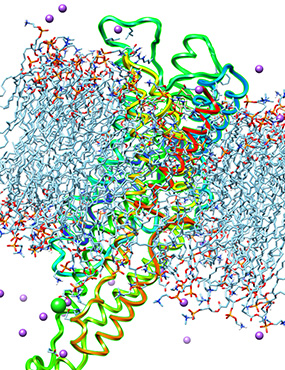
Fruit fly odorant receptors
Bacterocera fruit flies, including Queensland fruit fly, Jarvis’ fruit fly, and Oriental fruit flyare highly destructive pests of fruits and vegetable crops and pose economic threats in Australia as well as globally. Exotic Bactrocera species entering Australia from overseas also present a high risk, regarded as a potential ‘megashock’ event for Australia’s $15 billion horticultural industry. Many Bactrocera species are strongly attracted to plant phytochemicals such as Methyl Eugenol, Zingerone and Raspberry ketone. Insects recognize phytochemicals through odorant receptors (ORs) and identification of OR-phytochemical pairs can enable the development of novel lures.
Molecular docking is a well-established computational method to study receptor-ligand interactions at the molecular level. The molecular docking requires a 3-dimensaional structure of the receptor. Currently, there exists no experimental structure for any Bacterocera species and so computational modelling of these receptors is needed. This project involves the in silico 3-dimensional modelling of the ORs based on transcriptomic evidence and elucidating the OR-lure binding interactions through inverse molecular docking. The molecular dynamics simulation is then executed to further validate the putative OR-lure pairs and to study the conformational change within the binding pocket of the receptor. This project also involves the development of a semi-automated computational pipeline to identify the putative ORs in unannotated sequenced Bacterocera genomes and establishing the OR-lure pairs.
Funding: Macquarie University Covid Recovery Fellowship
Partners: The Commonwealth Scientific and Industrial Research Organisation (CSIRO)
Contact: Prof Phil Taylor, Prof Shoba Ranganathan, Dr Amara Jabeen E: amara.jabeen@mq.edu.au